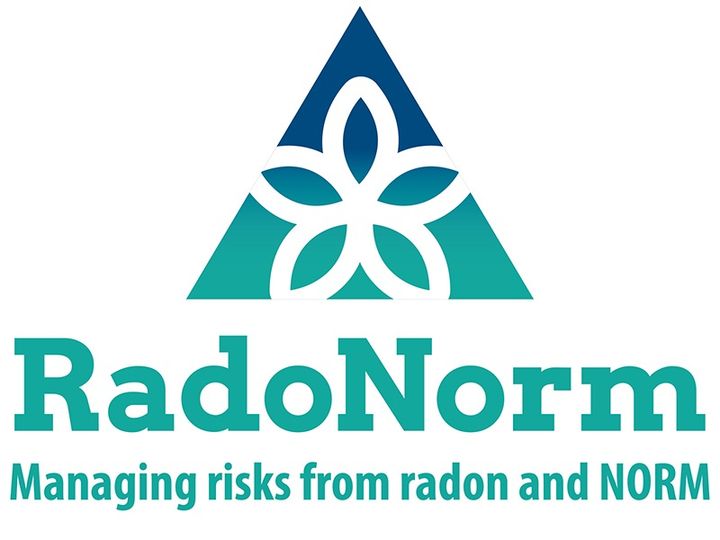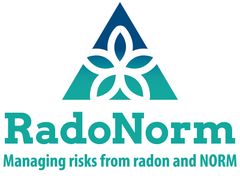RadoNorm Joint European research providing information about the risks caused by natural radiation and its management

The RadoNorm research project develops methods that enable the assessment of risks caused by radioactive substances and their management in homes, workplaces, and mines. The project includes participants from 56 universities from 22 EU countries.
“RadoNorm is a multidisciplinary project that covers the entire chain from exposure to dose calculation, health risk assessments, risk management, training, stakeholder consultation, and communications,” says Research Coordinator Sisko Salomaa from the Radiation and Nuclear Safety Authority. “The scientific approach is diversified and utilizes fundamental research, applied research, technological development work, and development of practices depending on the question currently being addressed.”
According to Salomaa, training is also emphasized in the project. A total of 18 PhD candidates and 12 post-doctoral researchers will be recruited for the project through open calls. “Systematic research training and coaching will be arranged for the young researchers participating in the project. They will form the high-level expert network of the future in Europe,” says Sisko Salomaa, who leads the RadoNorm work package focusing on health risks and biological effects.
Radon knowledge from Finland to the rest of Europe
Several radionuclides occur naturally in the soil and bedrock. The most significant radionuclides are the decay chains of uranium and thorium isotopes 238U and 232Th as well as the potassium isotope 40K. Human activities strongly affect the amount of these substances that end up in our immediate living environment.
Most of the radiation exposure caused by radioactive substances in Europe originates from naturally occurring radionuclides. If naturally occurring radionuclides exist in significant amounts in terms of exposure, in other words, above the control limits, we are talking about materials that can cause exposure to natural radiation or NORM materials (Naturally Occurring Radioactive Material). The control limit is one becquerel per gram (Bq/g) of material for 238U, 232Th, and their decay products.
The main exposing substance is radon, which is an alpha emitter similar to many other uranium and thorium series substances. Alpha emitters, when in the body, cause a higher radiation dose than substances that emit gamma or beta radiation. As an example, gaseous radon can enter the body by inhalation, and thereafter, short-lived decay products of radon can then cause exposure.
Indoor radon concentrations in Finland are high even on the global scale. The bedrock in Finland contains many granitic rocks whose uranium concentration is higher than that of average bedrock; further, due to cold winters, houses are well insulated, which enhances radon emanation from the ground. Considerable experience in the prevention of radon-related harms already exists in Finland and, for example, due to building regulations aimed at radon prevention, the radon concentrations of new dwellings are significantly lower than some years ago. The Finnish partners can share this empirical knowledge with other EU countries.
Research providing new information for the implementation of the Radiation Act
High concentrations of radon and NORM materials may also occur, for example, in mines and other underground workplaces, mineral processing, metal processing and recycling, ground water processing facilities, as well as pigment and fertilizer production facilities. Similarly, energy industry processes such as coal and peat burning, geothermal energy production, and oil refining may increase concentrations of naturally occurring radioactive materials in process fractions and waste.
The occurrence of NORM materials and waste in EU countries, and the radiation exposure caused by them, are being surveyed as part of the RadoNorm project. Therefore, the RadoNorm research project supports the implementation of the new Radiation Act in Finland and European radiation protection directive on which it is based.
The Radiation Act requires that naturally occurring radioactive materials are regulated in the same way as materials originating from artificial sources if the radiation exposure caused by them can be significant. “The new Radiation Act calls for in-depth knowledge about the behavior of naturally occurring radioactive materials in the environment and industry,” says Pia Vesterbacka, Head of the Department of Environmental Radiation Surveillance and Emergency Preparedness at STUK. “We must be able to predict the risks related to them and develop regulatory requirements and methods needed in measuring, dose estimations, risk assessments, risk prevention and regulatory control.”
In the RadoNorm project, the Radiation and Nuclear Safety Authority participates in the assessment of radiation exposure and health risks caused by natural radiation as well as in research activities related to risk prevention. The University of Helsinki participates in surveys concerning mining and underground excavations, and studies particularly the role of microbes in the release of NORM materials. The University of Tampere studies the connection between radon and childhood leukemia and brain tumors. The University of Eastern Finland develops modelling related to the NORM material transport in environment.
More information:
STUK: Research Coordinator Sisko Salomaa, +358 40 5441317
University of Helsinki: Professor Gareth Law, +358 50 55 60920
University of Tampere: Professor Anssi Auvinen, +358 400 606477
University of Eastern Finland: PhD Päivi Roivainen, +358 50 4783853
Research project information
Project name: Towards effective radiation protection based on improved scientific evidence and social considerations – focus on radon and NORM (RadoNorm).
Funding: Horizon 2020 Euratom research and training programme. A total of EUR 18 million of EU funding, of which the share of Finnish research institutes is almost EUR million.
Duration: 5 years (2020–2025)
Coordinator: Bundesamt für Strahlenschutz (BfS), Germany
Finnish partners: The Radiation and Nuclear Safety Authority, University of Helsinki, University of Eastern Finland, University of Tampere
Images
About Säteilyturvakeskus (STUK)
Säteilyturvakeskus (STUK) on sosiaali- ja terveysministeriön hallinnonalan viranomainen, joka valvoo säteily- ja ydinturvallisuutta Suomessa. Tehtävämme on ihmisten, yhteiskunnan, ympäristön ja tulevien sukupolvien suojelu säteilyn haitallisilta vaikutuksilta.
Subscribe to releases from Säteilyturvakeskus (STUK)
Subscribe to all the latest releases from Säteilyturvakeskus (STUK) by registering your e-mail address below. You can unsubscribe at any time.
Latest releases from Säteilyturvakeskus (STUK)
Strålsäkerhetscentralen tackar svampplockarna12.12.2025 08:30:40 EET | Pressmeddelande
Strålsäkerhetscentralens svampkampanj blev en större framgång än väntat. Under kampanjen, som pågick till slutet av november, mättes radioaktiviteten i nästan 900 matsvampsprover insamlade från olika delar av Finland.
Säteilyturvakeskus kiittää sienestäjiä12.12.2025 08:30:40 EET | Tiedote
Säteilyturvakeskuksen sienikampanja onnistui yli odotusten. Marraskuun loppuun jatkuneen kampanjan aikana mitattiin lähes 900 eri puolilta Suomea kerätyn ruokasieninäytteen radioaktiivisuus.
Hammasröntgenkuvausta ei pidä luvata ennen kuin suuhun on katsottu11.12.2025 14:47:29 EET | Tiedote
Säteilyturvakeskus huomauttaa hammasterveydenhuollon yksiköitä turhan suurpiirteisestä röntgentutkimusten mainostamisesta.
Slutförvaring av använt kärnbränsle kan inledas först när den anses vara säker4.12.2025 12:26:18 EET | Pressmeddelande
Arbets- och näringsministeriet väntar på Strålsäkerhetscentralens (STUK) utlåtande om ansökan om drifttillstånd för slutförvaring av använt kärnbränsle före slutet av juni 2026, om det är möjligt att göra detta då. Enligt STUK är tidtabellen möjlig men stram både för myndigheten och för sökanden.
Käytetyn ydinpolttoaineen loppusijoitus voi alkaa, kun se tiedetään turvalliseksi4.12.2025 12:26:18 EET | Tiedote
Työ- ja elinkeinoministeriö odottaa Säteilyturvakeskuksen lausuntoa käytetyn ydinpolttoaineen loppusijoituksen käyttölupahakemuksesta ennen kesäkuun 2026 loppua, jos se on siihen mennessä mahdollista tehdä. Säteilyturvakeskuksen mukaan aikataulu on mahdollinen mutta tiukka sekä viranomaiselle että luvanhakijalle.
In our pressroom you can read all our latest releases, find our press contacts, images, documents and other relevant information about us.
Visit our pressroom

